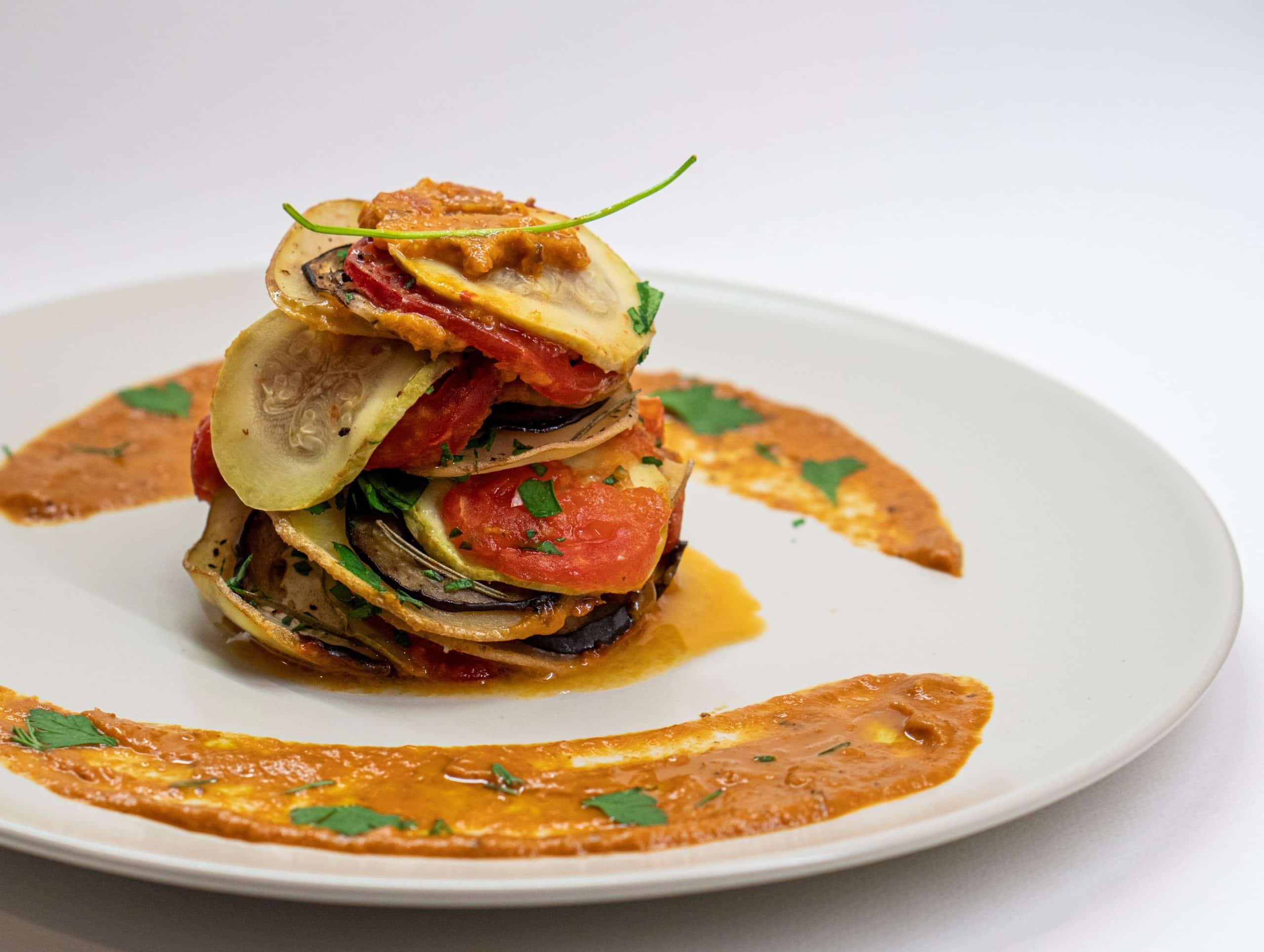
How to make authentic french ratatouille?
Ratatouille, a quintessential French dish, celebrates the abundance of fresh vegetables like eggplants, zucchini, and tomatoes at their seasonal peak. This vibrantly colored dish, originally from the Provence region, is not only nutritious but also incredibly flavorful. It’s a medley of vegetables cooked gently in olive oil, accented with garlic, salt, and pepper. Whether you wish to indulge in a foreign cuisine or yearn to relive your travel memories, mastering the art of making Ratatouille at home is a fantastic achievement.
Choosing the Right Ingredients
The essence of Ratatouille lies in its ingredients. In this case, the fresher the vegetables, the more delicious your Ratatouille will be. The classic recipe includes eggplant, zucchini, bell peppers, and tomatoes. However, there’s room for flexibility.
A lire aussi : What’s the best way to cook a whole chicken?
When selecting eggplants, opt for firm ones with a glossy skin. Zucchini should also be firm with an unblemished skin. As for bell peppers, choose those that are vibrant and heavy for their size. Lastly, for tomatoes, ripe and juicy ones are the best.
Garlic and onions are essential to add depth of flavor to the dish. A quality olive oil will enhance the taste of the vegetables and bring out their natural flavors. Fresh herbs, such as thyme, rosemary, and basil, add aroma and freshness, while salt and pepper adjust the seasoning.
A voir aussi : What are the essentials of a paleo diet meal plan?
Preparing the Vegetables
Before you start cooking, remember that Ratatouille is a dish that takes time to prepare. You need to clean and chop all the vegetables into evenly sized pieces. This helps them to cook evenly and at the same time.
For the eggplant and zucchini, cut them into rounds or half-moons, depending on their size. Bell peppers should be deseeded and chopped into thin strips or squares. Tomatoes need to be chopped into chunks. If you’re using fresh herbs, chop them finely.
Garlic can be minced or sliced, depending on your preference. Keep the onion separate as it’s usually the first vegetable to be cooked.
Cooking Ratatouille
Now comes the cooking part. Traditionally, each vegetable is sautéed separately in olive oil before they all are combined. This method ensures that each one retains its individual flavor, which contributes to the overall taste of the Ratatouille.
Heat some olive oil in a large pot or Dutch oven. Add the onions first, as they take the longest to cook. Once they’re softened and translucent – which should take about 10 minutes – add the garlic. After a couple of minutes, when the garlic is fragrant, add the bell peppers.
Once the peppers are slightly softened, add the eggplant and zucchini. These vegetables might soak up the oil, so be ready to add a little extra.
Once these vegetables have begun to soften, which should take about 15 minutes, add the tomatoes. Also, add your herbs, salt, and pepper at this stage.
Simmering the Dish
After all the vegetables have been added, it’s time to let the dish simmer. This process allows the flavors to meld together, creating a rich and hearty dish. Reduce the heat to low, cover the pot, and let it simmer for about an hour.
Check the Ratatouille periodically to ensure it’s not sticking to the bottom of the pot. Stir gently, so you don’t break up the vegetables. If the Ratatouille seems too dry, add a splash of water or vegetable broth.
After about an hour, the vegetables should be tender but not mushy. They should still retain some of their individual characteristics and not turn into a homogenous mixture.
Serving Ratatouille
Finally, it’s time to serve the Ratatouille. This versatile dish can be enjoyed in numerous ways. It can be served hot or cold, as a side dish or a main dish, over pasta or bread, or even as a filling for crepes.
Drizzle a bit of olive oil over the Ratatouille right before serving and add a sprinkle of fresh basil. This fresh touch is the perfect finish to this classic French dish.
Remember, the beauty of Ratatouille lies not only in its vibrant colors and flavors but also in its simplicity. Even though it takes time to prepare and cook, the result is worth it. It’s a dish that celebrates fresh vegetables and simple, clean flavors. So, roll up your sleeves, head to the kitchen, and get ready to make a delicious Ratatouille right at home.
Variations of the Ratatouille Recipe
There are myriad ways to prepare Ratatouille, and the recipe can be flexible according to your personal preference or the ingredients available. The essence remains the same – a hearty vegetable stew cooked in olive oil. However, variations on this recipe have emerged over time, each with exciting twists on the classic French dish.
One popular variation includes the addition of olives or capers for an extra tangy flavor. Some recipes also include yellow squash, which adds a different texture and another layer of flavor to the mix. In some regions, crushed tomatoes are used instead of fresh ones, lending the Ratatouille a slightly sweeter and richer taste.
For those who prefer a bit of heat, adding a pinch of chili flakes or a chopped red pepper can spice up the traditional Ratatouille.
When it comes to herbs, a bouquet garni – a bundle of herbs usually tied together with string – is sometimes used. This bundle often includes thyme, rosemary, and bay leaves, and is added at the beginning of the cooking process, then removed before serving.
Remember, the key to a great Ratatouille is patience and the use of fresh, high-quality ingredients. Don’t rush the cooking process. Gently simmer the vegetable stew to allow the flavors to blend together perfectly.
Conclusion
While the original Ratatouille recipe is undeniably delicious, the beauty of this dish lies in its adaptability. You can add your own touch, experiment with different vegetables, or adjust the seasoning to your taste. From the choice of vegetables to the herbs and spices, Ratatouille is a canvas waiting for your culinary creativity.
Whether you prefer the traditional Ratatouille or a variation of it, remember to use generous amounts of olive oil and to simmer the vegetables on low heat to retain their individual flavors. Don’t forget the final flourish – a drizzle of olive oil and a sprinkle of fresh basil right before serving.
As a side dish or a main, hot or cold, Ratatouille is a celebration of vegetables and the flavors of Provence. Learning to make this classic French dish will not only add a new recipe to your culinary repertoire but also transport you to the rustic countryside of France, right from your kitchen.
So, start by grabbing that tbsp of olive, the freshest eggplant, zucchini, and bell peppers you can find, and embark on your journey of making a grand Ratatouille. And remember, every cook minute counts in bringing out the robust flavors in this classic vegetable stew.
Bon Appétit!
